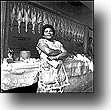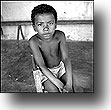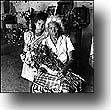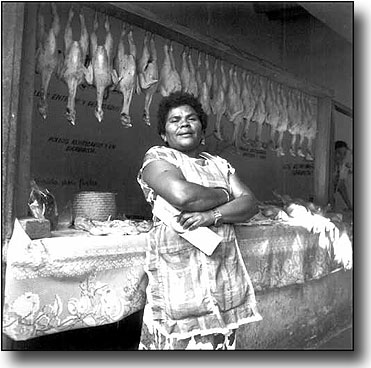The Latino Museum of History, Art and Culture ,
Feb 08, 2002 - Mar 20, 2002
Los Angeles, CA, USA
In search of the African Diaspora in Mexico...
by Marjorie L. Harth
The photographs from Tengo Casi 500 Años: Africa's Legacy in Mexico, Central & South America constitute an ambitious and important project by Tony Gleaton. Since 1986, he has traveled throughout Latin America in search of the African Diaspora, seeking out black communities and, through his photographs, giving visibility to people who are in his view, invisible in their societies. Although his work serves as a document of the little-known presence of Blacks in Mexico and Central and South America, his approach is not "documentary" insofar as that term implies objective and emotionally neutral observation. Tony Gleatonçs "eye" is neither objective nor dispassionate. He is intensely involved both with the content of his photographs and with the artistic processes involved in producing them. To his subject, Gleaton brings a lifetime of experience as a person of color living in predominantly non-Black cultures. To his work, he brings the highly refined aesthetic sensibilities and technical skills of a highly educated and well traveled artist. These elements come together on an intuitive level in works of art that strike an admirable balance of form and content of art and thought. Gleaton's photographs derive from a broad range of sources, serve a variety of interests, and can be seen in many ways. On the most basic level, they are journals of his travels, documents of an enormously complex project that has occupied fifteen years already and is still underway. Taking photographs is one of the ways that Gleaton interacts with the people that interest him, and the importance of the relationship between photographer and subject can be discerned in the images--faces responding to the fact of being photographed. These are individual portraits and, taken together, a collective homage to the largely unrecognized African Diaspora in Latin America. They are the work of a photographer interested both in the social and political realities of the subject and in the opportunity it offers for an artist to revisit, draw from, and simultaneously reframe longstanding iconographic tradition. And because they are pictures of people of color at a time when racial unrest continues to plague our communities, some will inevitably see in them a political agenda, believe them to be primarily about color, about class. It is worth noting that similarly observed images of White subjects would be unlikely to raise these issues. Above all, however, these are works of art that stand above the individual elements and influences that can be discerned within them. More than the sum of their parts, they are, ultimately, what we make of them. And if Gleaton has his way, what we make of them will derive from both form and content, from both art and thought. By Marjorie L. Harth
Director, Montgomery Gallery
Pomona College, Claremont, California
|







